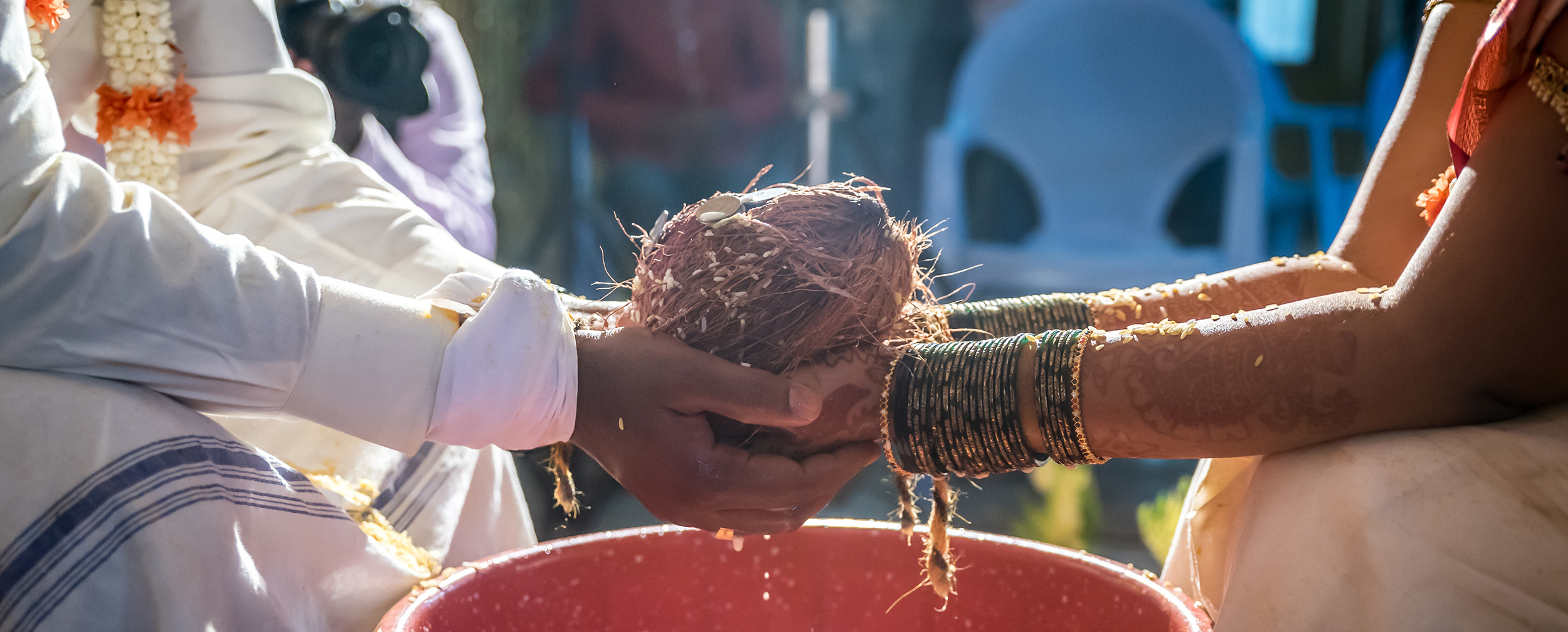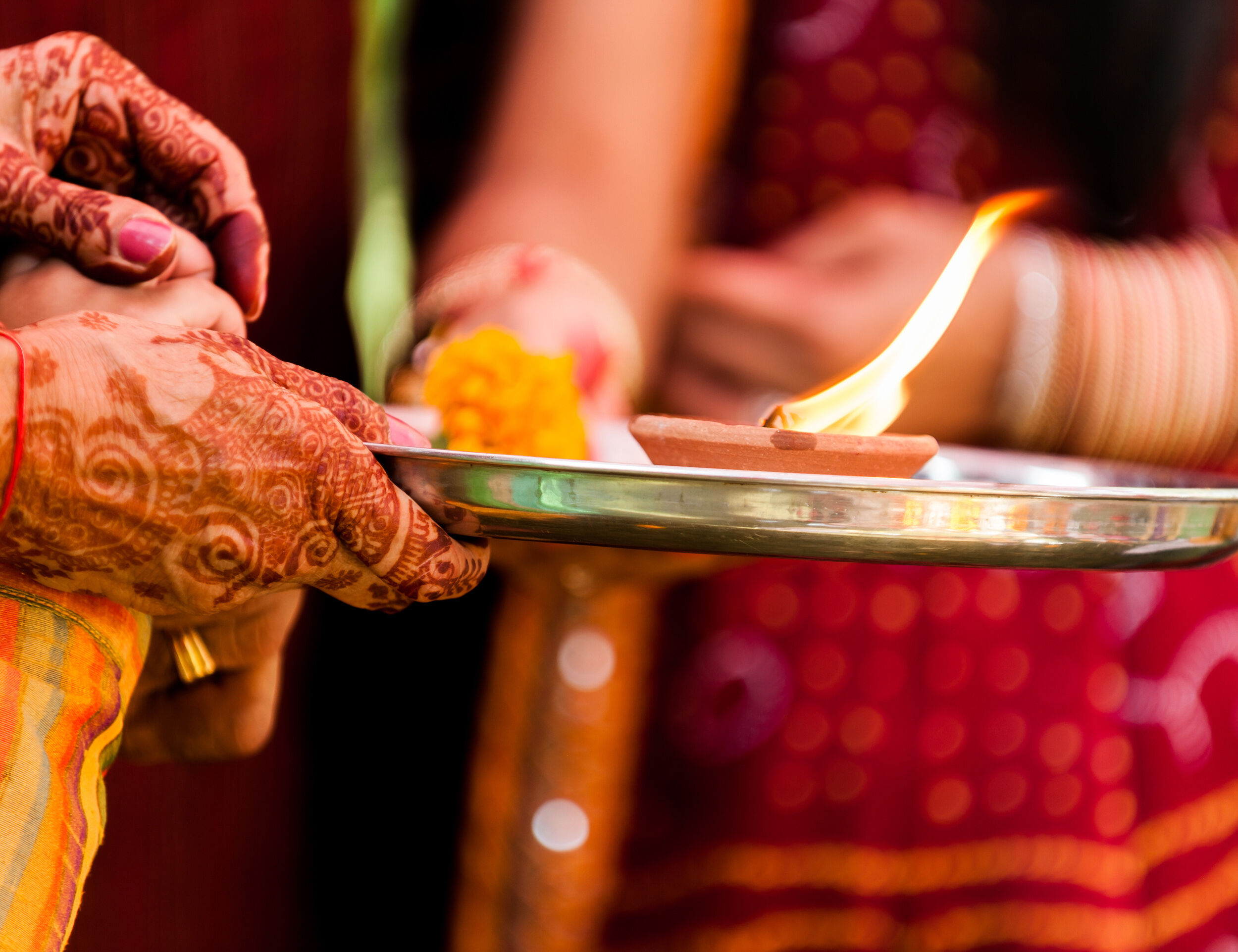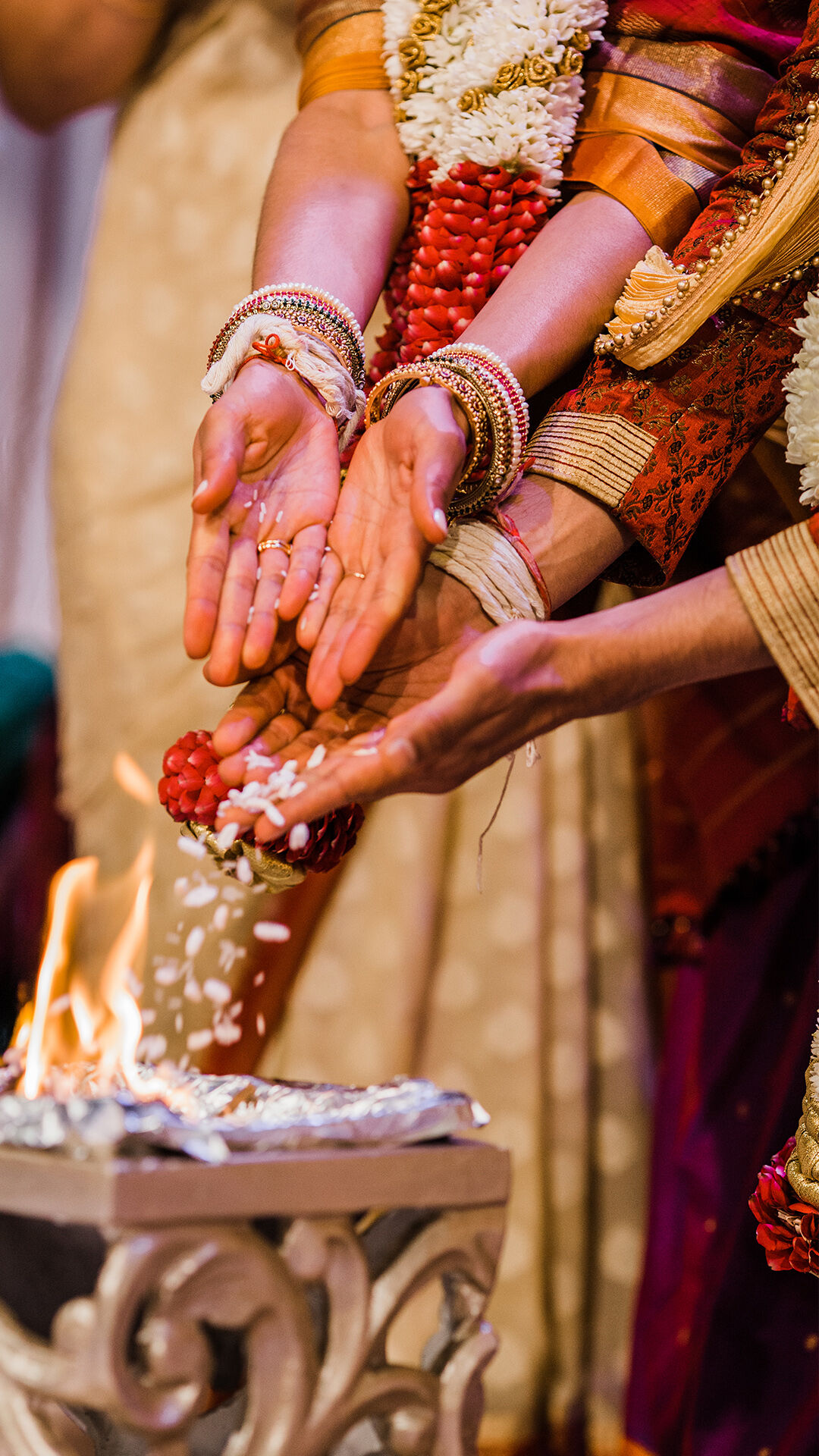STORIES BY MANYAVAR & MOHEY

Lifestyle
Traditional South Indian Weddings in Karnataka: A Deep Dive into Kannada Wedding Rituals
Date 19 August 2025 Reading time: 7-10 mins
A whiff of jasmine garlands, the sparkle of gold on silk sarees, and the rhythmic chants of Sanskrit mantras—this is the sensory feast that awaits at a Kannada wedding. Karnataka's marriage ceremonies stand out with their minimalist beauty and profound symbolism, making them some of the most culturally significant celebrations in India.
Did you know that many Kannada wedding ceremony rituals date back over 2,000 years? While modern touches have found their way into these celebrations, the core traditions remain beautifully preserved across generations. Whether you're planning your own wedding, attending one as a guest, or simply curious about cultural practices across India, understanding the nuances of a South Indian wedding in Karnataka, India opens a window into a world where every gesture carries meaning.
The Rich History of Kannada Weddings
The roots of the Kannada wedding ceremony run deep into ancient Karnataka history, with documented practices dating back to the Kadamba Dynasty (345-525 CE). These ceremonies draw from Vedic traditions and evolved through various regional influences, including the Hoysala, Vijayanagara, and Mysore kingdoms.
What's fascinating about the Kannada wedding ceremony is how it preserves cultural elements that might otherwise be lost to time. For instance, the Dhareyeradu ritual—where the bride's father places his daughter's hand in the groom's—appears in stone carvings at the 12th-century Hoysala temples.
The wedding attire in South Indian weddings in Karnataka, India has evolved while maintaining its core identity. Historically, brides wore nine-yard sarees in specific colours based on their community, while grooms donned dhotis with angavastrams (upper body cloth). Today's couples often choose contemporary adaptations of these classic styles, with brides selecting from a wide range of silk sarees and silk lehengas that honour Karnataka's aesthetic heritage.
Pre-Wedding Rituals in a South Indian Wedding in Karnataka
The journey to marriage begins well before the wedding day in a South Indian wedding in Karnataka, India. These pre-wedding ceremonies set the spiritual foundation for the union and bring families together in celebration.
Naandi
The Naandi marks the official beginning of wedding preparations, typically held 3-5 days before the main ceremony. During this ritual, both families separately perform pujas to honour ancestors and family deities, seeking their blessings for a smooth wedding. Married women (sumangalis) play a crucial role, lighting lamps and preparing sacred items.
For this ceremony, men often choose simple yet dignified wedding kurta sets for men in light colours, paired with a silk dhoti. Women wear authentic classic silk sarees in auspicious colours like red, green, or mustard.
Dev Karya
This essential ritual involves visiting the family temple to invite the kula devata (family deity) to preside over the wedding. The priest performs special prayers, and both families offer coconuts, fruits, and flowers. The ceremony concludes with the distribution of prasad among relatives.
Kaashi Yatra
Perhaps the most dramatic of all pre-wedding rituals in a Kannada wedding ceremony, the Kaashi Yatra represents a symbolic test of the groom's character. The groom, dressed in simple white attire with a walking stick and umbrella, announces his intention to renounce worldly pleasures and leave for Kashi (Varanasi) to pursue spiritual enlightenment.
The bride's father intercepts him, convincing him that marriage (grihastha ashrama) is equally spiritual and offering his daughter's hand. This playful negotiation often provides much entertainment for guests while reinforcing the wedding's spiritual significance.
The Wedding Day: A Deep Dive into Kannada Wedding Rituals
The main day of a South Indian wedding in Karnataka, India unfolds with a series of deeply meaningful rituals, each carrying profound symbolism. The ceremonies typically begin early in the morning and follow a precise sequence steeped in Vedic traditions.
Mandap Muhurta and Arrival
A Kannada wedding day begins with the purification of the wedding mandap, a simple yet elegant canopy usually adorned with banana leaves, mango leaves, and kalashas (sacred pots). Unlike the flower-laden structures of North Indian weddings, the South Indian wedding in Karnataka, India mandap focuses on auspicious symbols rather than decorative elements.
The groom arrives first, welcomed by the bride's mother who performs aarti and applies tilak to his forehead. For this grand entrance, many grooms may choose something conventional or regal wedding sherwanis in cream, gold, or maroon tones.
Var Puja
In this significant ritual in a South Indian wedding in Karnataka, India, the groom is honoured as an embodiment of Lord Vishnu. The bride's family washes his feet and presents him with new clothes, typically a silk kurta dhoti. This ceremony acknowledges the divine aspect of marriage in Hindu tradition.
Jaimala (Garland Exchange)
When the bride enters, her face remains covered by peacock feathers (held by her sister or cousin), and a cloth separates her from the groom. As the priest chants mantras, this partition is gradually removed, allowing the couple to see each other. They then exchange garlands (jaimala) in a moment that symbolises their mutual acceptance.
Dhare Herdu (Kanyadaan)
This central ritual in a South Indian wedding in Karnataka, India involves the bride's father giving away his daughter to the groom. Water is poured over their joined hands while the priest recites mantras, symbolising the pure flow of love and blessings from one family to another. The couple's hands are then tied with a sacred thread, representing their unbreakable bond.
Mangalya Dharana
The highlight of any Kannada wedding ceremony is the tying of the mangalsutra (sacred necklace). The groom ties three knots, each representing different aspects of married life: dharma (righteousness), artha (wealth), and kama (love). Family members shower the couple with rice and flowers during this auspicious moment.
Saptapadi (Seven Steps)
The couple takes seven steps together around the sacred fire, with each step representing a vow for their married life. These promises in a South Indian wedding in Karnataka, India include:
- Providing nourishment for the family
- Building physical and mental strength together
- Growing spiritual wealth
- Cultivating happiness and harmony
- Caring for children and future generations
- Enjoying all seasons of life together
- Maintaining lifelong friendship as partners
Post-Wedding Rituals in a South Indian Wedding in Karnataka
The celebrations continue even after the main ceremony concludes, with several post-wedding rituals that ease the bride's transition to her new home.
Grihapravesh
When the bride enters her new home, she kicks over a pot of rice placed at the threshold, symbolising prosperity entering the household. She then steps into the house with her right foot first, marking an auspicious beginning.
Mrutyunjaya Homa
Some families perform this special fire ritual a few days after the wedding to remove any negative energies and protect the couple from evil eyes.
Ratri Kasara
This intimate ritual takes place on the wedding night, where elder women from both families prepare a special sweet dish (payasam) for the couple to share. This symbolises the sweetness they should bring to each other's lives.
The Significance of Rituals in a Kannada Wedding
Beyond their ceremonial beauty, the rituals in a South Indian wedding in Karnataka, India carry deep philosophical meanings:
- Spiritual significance: Connecting the couple to divine blessings
- Social recognition: Publicly announcing the union to the community
- Cultural preservation: Maintaining Karnataka's heritage through lived traditions
- Family bonding: Bringing two families together through shared responsibilities
- Life lessons: Teaching the couple values needed for a successful marriage
Unlike some wedding ceremonies that focus primarily on spectacle, South Indian wedding in Karnataka, India rituals emphasise substance over style. The minimalist approach reflects Karnataka's philosophical outlook, where inner meaning trumps external display.
The Role of Family and Community in Kannada Weddings
A Kannada wedding ceremony is never just about the couple—it's a community celebration where everyone plays a part. Extended family members have specific responsibilities throughout the process:
- Maternal uncles often bear significant financial contributions
- Paternal aunts oversee ritual preparations and guide the bride
- Cousins organise light-hearted games to ease tensions between families
- Elders provide blessings and wisdom at critical moments
Modern Influences on South Indian Weddings in Karnataka
Today's Kannada wedding celebrations often blend time-honoured customs with contemporary touches. Several trends have emerged in recent years:
- Pre-wedding photoshoots in heritage locations around Karnataka
- Inclusion of North Indian elements like mehndi and sangeet ceremonies
- Fusion food menus that combine Karnataka specialties with pan-Indian cuisines
- Contemporary versions of conventional attire, with brides choosing from designer bride lehengas collection pieces and grooms opting for contemporary suits or sherwanis.
While adapting to modern sensibilities and trends, most families still maintain the core spiritual rituals that define a South Indian wedding in Karnataka, India. This balance allows couples to honour their heritage while expressing their individual style.
The Continuity of Tradition in South Indian Weddings in Karnataka
The Kannada wedding ceremony stands as a beautiful example of how ancient traditions remain relevant in contemporary times. For couples planning a South Indian wedding in Karnataka, India, embracing these time-honoured customs offers more than just a beautiful celebration—it provides a foundation of values and community support for the journey ahead.
Whether you're selecting regal bridal sarees, spectacular bridal lehengas or choosing between kurtas or sherwanis for the groom, find your perfect celebration look for these meaningful moments at Manyavar and Mohey, where convention meets contemporary style.







